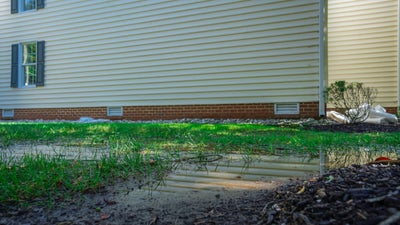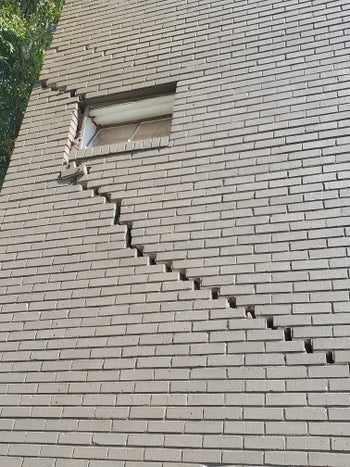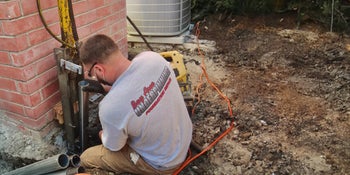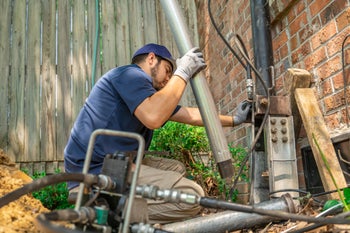Climate Change in California and How It Affects Your Home

In 2023, California took significant legislative strides in advancing its climate initiatives. However, the residents of the Golden State experienced firsthand the repercussions of extreme climate conditions anyway.
With nearly 85 percent of California’s population living or working in coastal counties, the deadly wildfires and the unprecedented wet conditions following years of drought are leaving indelible marks on homes and businesses across the state.
While much is written on the topic, this article aims to guide homeowners on key indicators to watch for in their home and the importance of taking preemptive measures to brace for extreme weather.
California Climate Change Data
- California was cooler in 2023, with an average temperature of 58.2°F.
- At the beginning of 2023, 71% of California was in a drought of at least D2 severity.
- California had more than 30 atmospheric rivers during the 2022-2023 winter.
- In San Fransisco, it rained 34.18 inches in total from 2022 – 2023. 64% more than the previous 20-year average.
Understanding California’s Recent Weather

California homeowners have faced an increasingly volatile climate in recent years, a trend that peaked in 2023 with what the media has termed “climate whiplash.”
This term describes a rapid shift from prolonged droughts to episodes of extreme rain.
While the state has long grappled with the impacts of drought, the sudden onslaught of heavy rainfall introduces its own set of challenges.
Taking steps to safeguard your home against the impact of climate change is now more crucial than ever.
How Extreme Weather Affects Your Home
As extreme weather becomes a reality in California, it’s important to understand how it can affect your home.
Bay Area Underpinning offers specialized solutions to address these foundation problems, making sure your home stays safe and secure.
Drought
While California is currently drought-free for the first time in years, it’s important to understand how droughts impact your home.
Problem: Foundation Settlement
During dry conditions, the soil around and underneath your home shrinks. This shrinking creates voids, leading to uneven home settlement that compromises its stability and safety.
Look for cracks in your brickwork, sticking doors and windows, nail pops, or an uneven floor.
Solution: Foundation Piers
To prevent sinking caused by drought, Bay Area Underpinning installs foundation piers to stabilize and potentially lift your home back to its original position.
These piers bypass shifting soil, anchoring deeply into the stable, permanent bedrock below, offering a lasting solution to drought problems.

Heavy Rain & Flooding

Flooding is becoming a stark reality for California, where one in five residents lives in areas vulnerable to floodwaters.
The surge in atmospheric rivers over the last year has made it crucial to keep a close eye on this phenomenon, as the risk of flooding escalates with the intensity of these rivers in the sky.
What is an atmospheric river?
An atmospheric river is a long, narrow region in the atmosphere that carries moisture thousands of miles, often from the tropics to cooler regions. When these rivers in the sky make landfall, they release this moisture in the form of prolonged rainfall.
So, how do flooding and rainfall impact your home?
Problem: Wet Crawl Space, Bowing Walls
When there’s too much water around your home’s foundation, it creates pressure that can push water into your home through even the smallest of openings.
This can cause water to accumulate in the crawl space, leading to mold growth and wood rot, or it can make the foundation walls bow inward.
Both issues not only let more water in but also threaten the stability and safety of your home by compromising its structural integrity.
Solution: Crawl Space Jacks
To address water damage and the resulting structural issues, Bay Area Underpinning utilizes SettleStop™ IntelliJack™ Crawl Space Jacks to reinforce your home.
Capable of supporting more than 24,000 lbs. per jack, these systems ensure your floors are firmly held, reducing any unevenness or bounce.
Snowfall

2023 brought another unusual weather event to California—heavy snow. In March, some regions saw up to 6 feet of snow, while the Sierra Nevada mountains reported 10 feet of snow in places. In addition to causing widespread road closures and flight and traffic delays, the wildlife in the area was significantly impacted by the intense snowfall.
With the prospect of another wet winter ahead, it’s important to understand how this abnormal snowfall can affect your home.
Problem: Cracked Concrete
Heavy snow accumulation eventually results in snowmelt. Throughout the day, this runoff seeps into the concrete and soil surrounding your home. Then, at night, as temperatures fall, the water freezes. This freeze-thaw cycle can cause the ground to heave and lead to cracked concrete.
Look for cracks in your driveway, sidewalk, pool deck, or even your slab foundation.
Solution: PolyRenewal™
PolyRenewal™ offers an innovative solution for lifting and leveling concrete that has cracked and sunk due to the freeze-thaw cycle.
Unlike traditional mudjacking, PolyRenewal™ uses a waterproof material that prevents the same issue from recurring. This waterproof feature ensures that water cannot seep into and damage the repaired concrete, providing a more durable solution.
Wind
The storms of 2023 brought not only rain and snow but also strong winds. In January alone, Sacramento witnessed the fall of over 1000 trees due to storm-related winds, tragically resulting in one fatality.
As wind continues to cause problems across California, let’s understand how it affects our homes.
Problem: Foundation Settlement
Strong winds, when combined with heavy rainfall, can lead to serious erosion under your home, causing the foundation to settle or sink.
Uprooted trees from the wind can worsen this problem, as they disturb the soil even more.
Solution: Foundation Piers
Foundation piers are effective not only for the issues caused by drought but also for homes dealing with erosion following wind damage.
Because piers are driven deep into the ground until they reach stable, load-bearing strata, they remain unaffected by soil erosion.

FAQs
Wildfires can damage a foundation indirectly by destroying vegetation that helps maintain soil stability, leading to increased risk of erosion or mudslides. Direct heat exposure can also weaken concrete and steel reinforcements.
Repeated exposure to extreme weather can exacerbate existing foundation issues, leading to progressively worse damage, increased repair costs, and potentially making the home unsafe to live in.
The type of soil can significantly impact foundation stability during extreme weather. Clay soils, for example, expand when wet and shrink when dry, leading to more dramatic movement and potential damage.
Bay Area Underpinning: The Best Choice for Foundation Stability in California
Choosing Bay Area Underpinning means you’re making a smart move to keep your foundation strong, even with California’s wild weather. Addressing issues as soon as they’re spotted is crucial for preparing your home to withstand the severe conditions expected in the years to come. With nearly two decades of experience, Bay Area Underpinning has encountered and fixed nearly every kind of foundation problem imaginable.
Our reputation is supported by thousands of positive online reviews, underscoring our commitment to offering innovative solutions and products. We strive to make the repair process as smooth and hassle-free as possible, ensuring your peace of mind and the long-term stability of your home.
Schedule a free, no-obligation inspection today.
Related Resources
Publish Date:
Last Modified Date:

Our Locations
2333 Courage Dr. Suite C
Fairfield, CA 94533
1161 N Fair Oaks Ave
Sunnyvale, CA 94089



